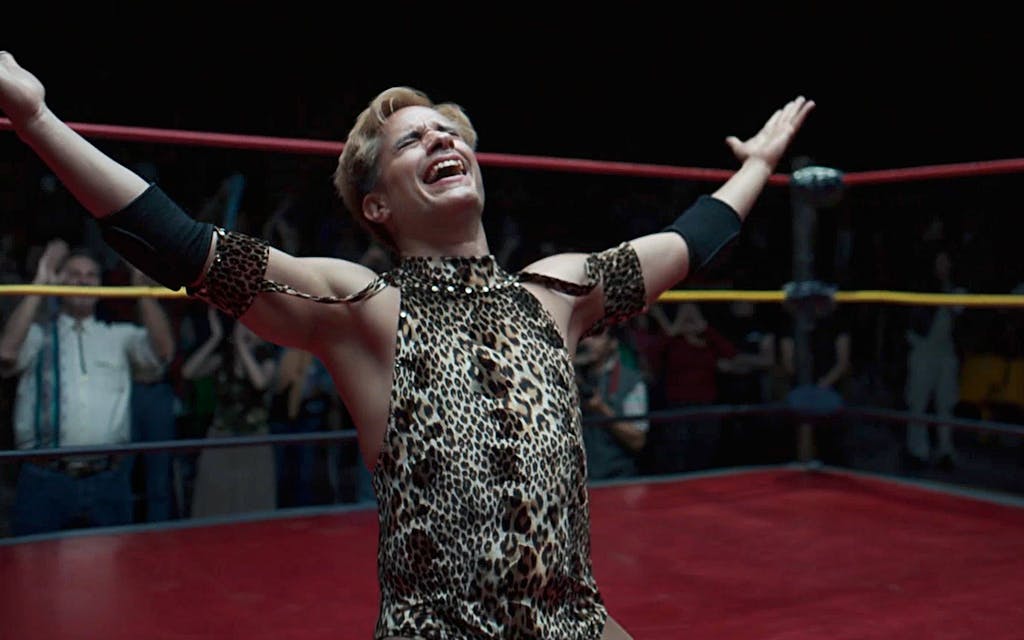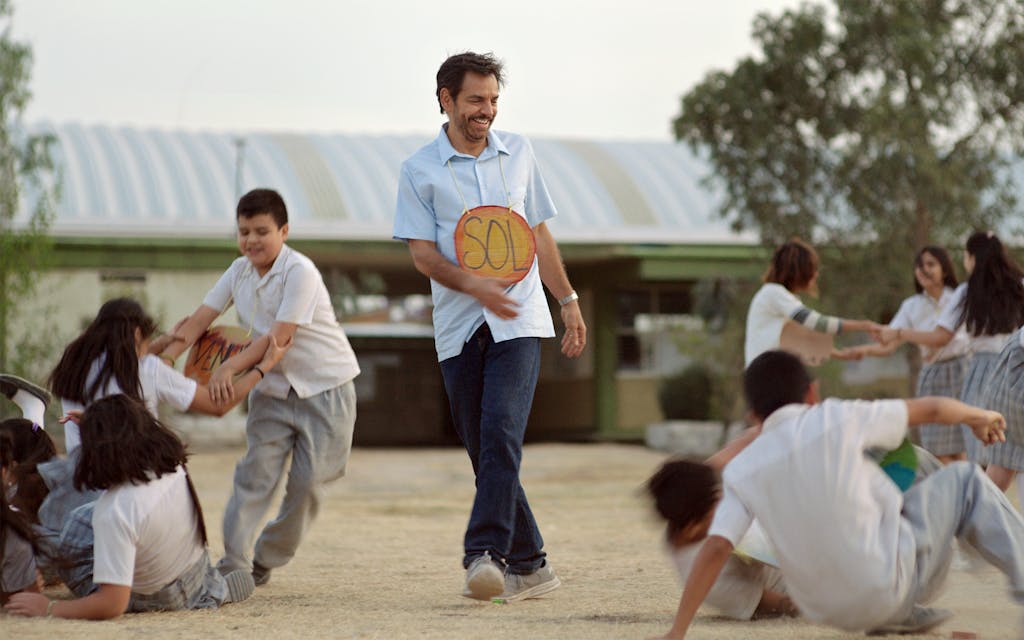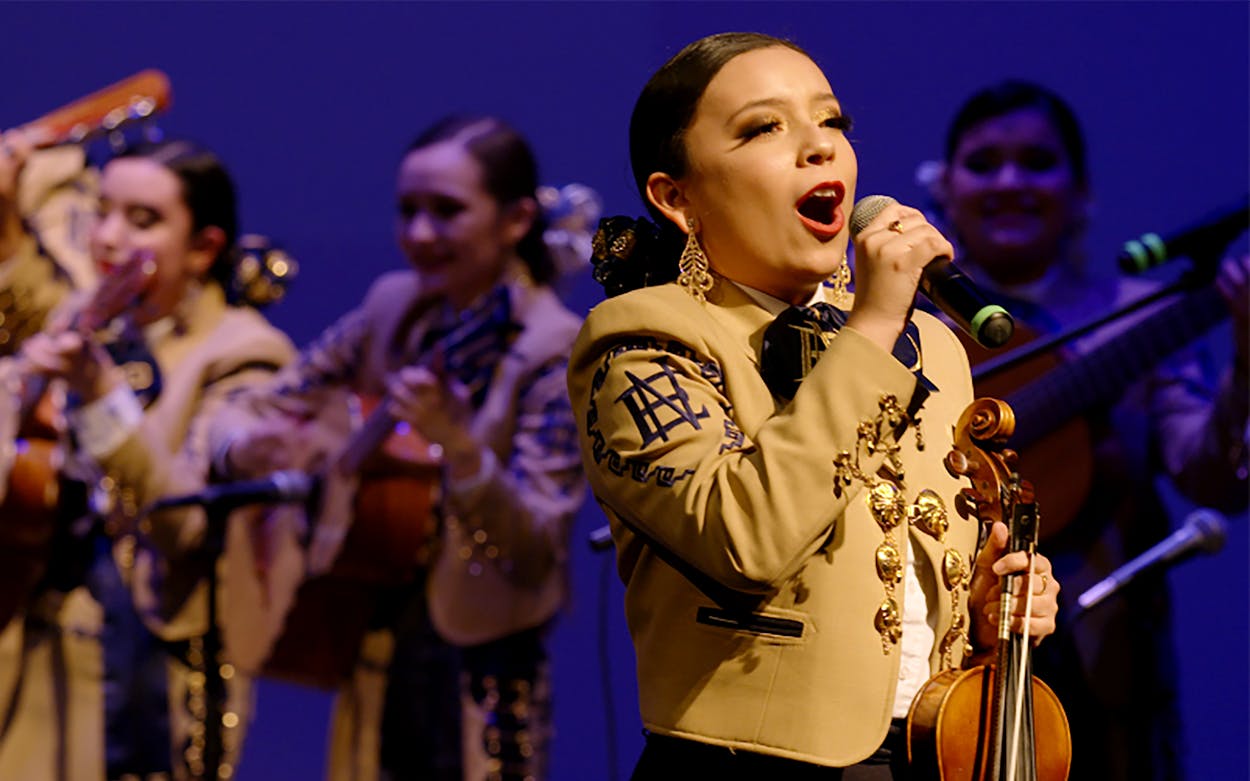Last week, the Sundance Film Festival brought people back to Park City, Utah, for the first time since 2020. It also brought them to the Texas border. Three standout Sundance films—the documentary Going Varsity in Mariachi, the based-on-a-true story student/teacher drama Radical, and the biopic Cassandro—were set on both sides of the Rio Grande Valley, as well as in El Paso and Juárez.
While it can sometimes feel a little forced to say that any given Sundance has a theme or trend (though many have tried: “New Queer Cinema” in 1992; climate change in 2017; #MeToo in 2018) such commonalities reflect what’s happening in the world, and say something about both the stories writers and directors want to tell, and what the programmers at Sundance choose to highlight.
This reality was noticeably true with the three Texas border films. None of them are pushing narrative or cinematic boundaries. Each one is a (mostly) feel-good genre picture, with a recognizable dramatic arc—coming of age, underdogs, people struggling to find purpose and acceptance, sports. Instead, these films expand who those stories are about, and in what languages they’re told. Here’s what to expect from each of them.

Cassandro
Early in Cassandro, which stars Gael García Bernal as the famous “Liberace of lucha libre,” Saúl Armendáriz is greeted by his mother outside of a car wash. He’s finishing the polish on a vehicle, and she asks him if he wants some tacos. We’re at the beloved H&H Car Wash in El Paso, sometime in the late eighties (never mind that the film was shot in Mexico City). And Saúl, who began wrestling in Juárez as a teenager, is about to transform himself from a part-time lucha libre into an exótico.
Except that unlike most of his fellow drag-wrestler exóticos, for whom experiencing fans’ homophobia is just part of the job of being a heel, Saúl is openly gay (he has a married, closeted lover who also wrestles, played by McAllen native Raúl Castillo Jr.). And as Cassandro, he intends to win some matches, not just take a fall to make the stars look good.
Cassandro’s story has already been told a few times, including in a full-length documentary and a New Yorker profile. Cassandro is the cleaned-up Hollywood version—it doesn’t totally shy away from portraying sex, drugs, poverty, and the intolerance Cassandro faced (especially from his father), but the complete details of Armendáriz’s life are far more harrowing.
Bernal (whose company with Diego Luna also produced the film) is equal parts hilarious, athletic, and emotional in the lead, while the supporting cast includes Texan Roberta Colindrez (best-known for I Love Dick and the musical Fun Home), a charismatic Puerto Rican actor named Benito Antonio Martínez Ocasio (better known as Bad Bunny), and several real-life wrestlers (including the legendary El Hijo del Santo, who really was an important part of Cassandro’s story).
Since all wrestling is essentially drag, it’s a rich subject for a film about identity. Even among wrestling fans, Cassandro is still better known all over Mexico than in the rest of Texas and America. But Cassandro, which will be out later this year via Amazon, may well change that.
Going Varsity in Mariachi
Directors Alejandra Vasquez and Sam Osborn first trained their cameras on Edinburg North High School’s Mariachi Oro as a short for Pop-Up Magazine in 2020. Now they’ve built on that with Going Varsity in Mariachi.
In the production notes, Vasquez and Osborn state that they were interested in capturing the border phenomenon of ni de aquí, ni de allá (“neither here nor there”) through the students and the school. The film intersperses musical performances with stories of the students, which include a tender gay romance and a 4-H Club kid using mariachi as her path to college (numerous Texas universities with music schools have mariachi as a discipline). It’s not hard to imagine Going Varsity as the basis for a fictionalized Hollywood flick à la Pitch Perfect, or even one of this year’s other Sundance movies, Theater Camp.
At one point in the film, Abel Acuña, Mariachi Oro’s director, acknowledges that the presence of the cameras is affecting what they capture, an inherent challenge for any documentary. “A lot of you guys think, ‘Somos chingones, I’m part of Edinburg North High School Mariachi, they’re doing a documentary on us. We’re awesome,’ ” he says. “‘I don’t have to go home and practice because I’m already good’ . . . I don’t care that they’re making a film on us. We still have a job to do!”

Radical
Set amidst poverty and cartel violence in Matamoros in 2011, Christopher Zalla’s Spanish-language film does not find its way physically over the Texas side of the border at all. Instead, Texas haunts the film as the unstated idyll of a better place, or at least one where an elementary school might have a working computer.
Based on a 2013 Wired article about a real teacher and his students at José Urbina López Primary School, Radical is another movie that you’ve seen before: the scrappy education drama, in which a colorful educator elevates his students’ lives and academic performances via unconventional methods and force of personality. (Texans will also relate to the fact that the plot hinges on standardized testing scores.)
In Radical’s production notes, Zalla says he was initially reluctant to do the project, viewing it as “an all-too-familiar and saccharine story.” The film is entirely predictable (there’s even a literal Chekhov’s gun) and shamelessly crowd-pleasing (it won Sundance’s top award voted by audience members, the “Festival Favorite”). But it’s also beautifully and bittersweetly rendered, with an irresistible performance from actor and comedian Eugenio Derbez, and, especially, the extraordinary young teenage actors, including Mia Fernanda Solis, Danilo Guardiola, and Jennifer Trejo. Texas does make one appearance: when Trejo’s aspiring-astronaut character stands atop a garbage dump and looks across the Rio Grande (using a telescope she built) to the Boca Chica SpaceX site. Dreams of a better place can still be complicated.
- More About:
- Film & TV







